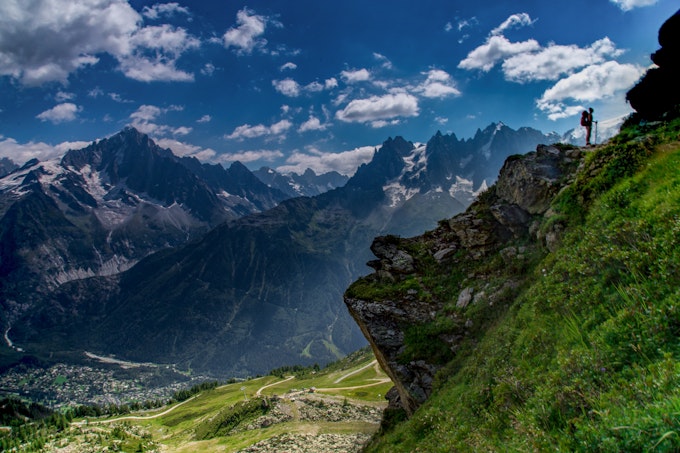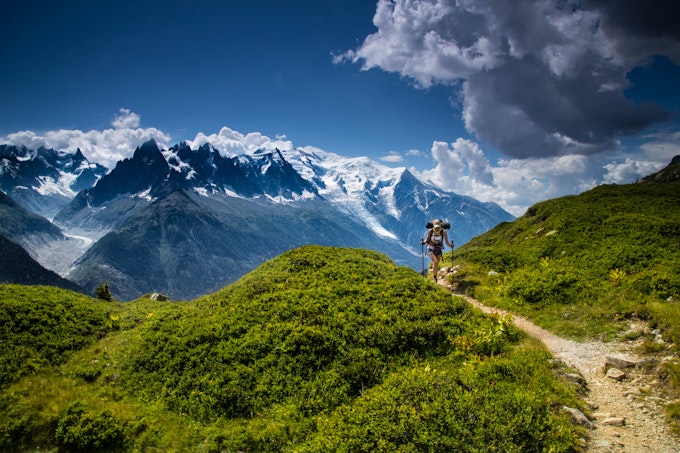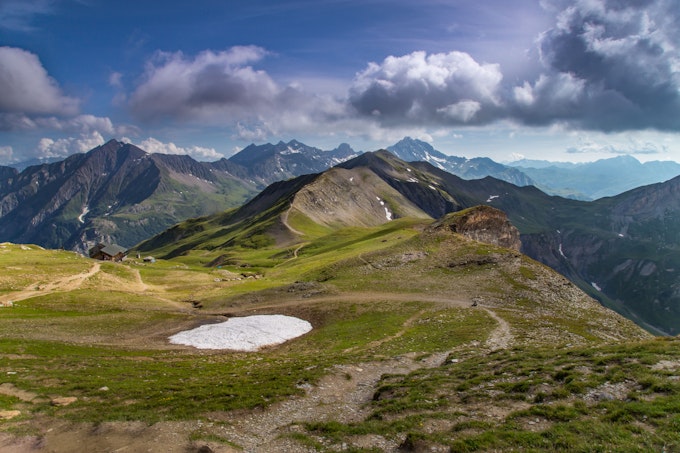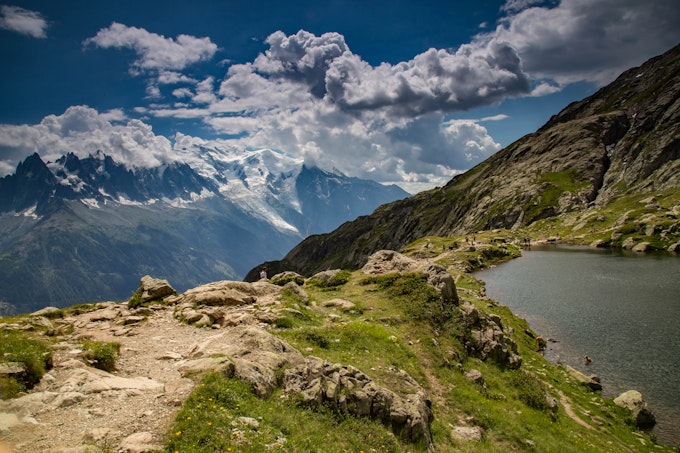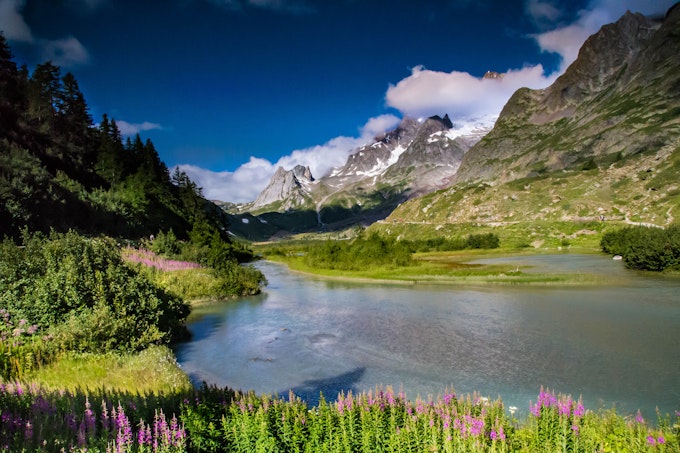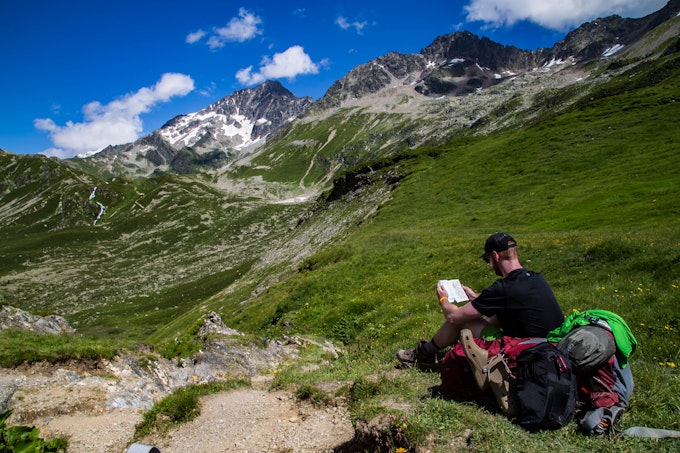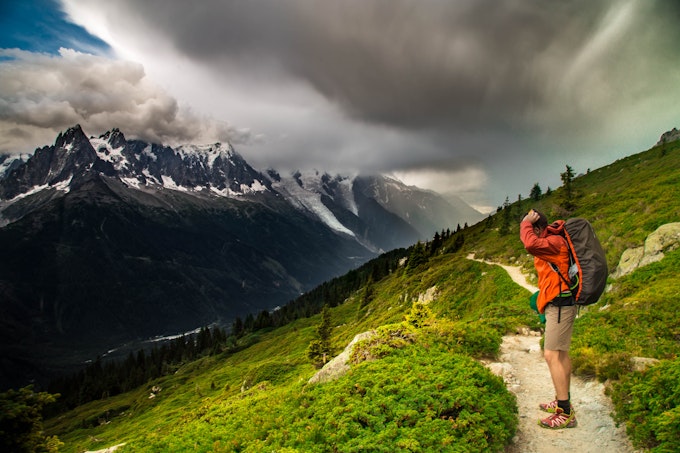Everything You Need to Know About Backpacking Tour Du Mont Blanc
Wondering what to pack and what to chuck? Do I need all these backpacker meals and protein bars? Do I want an extra pair of underwear or just go commando? Which variant should we do? I need a hot meal that doesn't come from a bag and a hot shower. Can I get that? You're about to backpack over 110 miles, an insane amount of elevation, and cross 3 countries. Every ounce counts! Here's what you will need to know for packing, camping vs huts/refuges, the variants you choose to take on a daily basis, and let's not forget about the abundance of local wine and cheese you need to try!
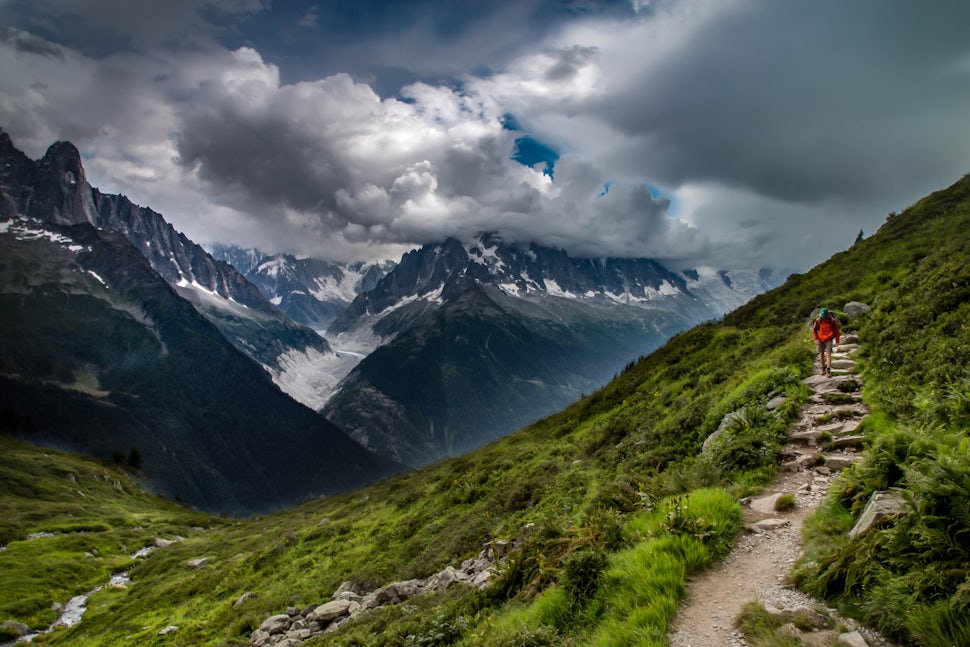
You're about to start a trek that has one of the most beautiful scenes that can be done in as little as 6-7 days and as many as 11-14 for most backpackers. People from all over the world visit the Alps for many reasons. Skiing, biking, ultra marathons, rock climbing, backpacking, day hikes, and parachuting being some of them. You will see all of these, sans skiing, if you backpack during the ideal time-summer. We decided to make our trek at the end of July and into August-flying back home the day before the ultra marathon started.
1. First Decision: Camp or Refuge?
There is a choice to sleep in huts/refuges every night or camping. You will be paying about $60-70/night for the refuge. Camping price ranged from free to $10-15. The refuges have private rooms, small shared rooms, and big shared rooms with up to around 20 people. We stayed a couple nights in the refuges due to weather. Those hot showers are the first thing to go; most were warm to cold by the time we got to them. The beds are wooden bunks you drop your sleeping bag on. Occasionally there are plastic mats they put on top of the bunks that make for a good night's sleep. You have warmth, though, and a hot meal at the end of the day that you didn't have to make. I'd say there are some great benefits to that (including not carrying all that camping gear). You also get to meet and greet the other TMB hikers, when you're in those tight quarters-my favorite part of international hiking!
We opted to tent camp most of our trip to save on costs. We were hiking this trek in 11 days, which would add up QUICK for costs. Saving our funds for the end of our trip in Paris for 3 days of local wine-induced tourist fun, we decided on tent camping. Camping "spots" were wherever you wanted to set up your tent that was next to the refuges. You will still have options for showers, food, possibly wifi, and a brown-bag lunch for the next day's hike, even if you don't stay at the huts. The price is reasonable at around $25-35 for everything, and you can still stay within your budget. Asking yourself after reading all these great things-why doesn't everyone camp then?? One word. Weight! Every ounce counts.
2. Next Decision: How much weight? What should I pack?
You're climbing over 33,000 ft in elevation. You think 13 miles a day is no big deal with the hiking you normally do at home? Try the stair master at your gym, carrying all your camping gear, cute numerous hiking clothes, and food, and do that up and down for 13 miles for 11 days straight. Your knees and toes will be begging you to pay that $60/night. Trust me. Camping can be done. Just follow the rule book (aka the TMB Bible),when it says stay below 25 lbs....DO IT! My pack, as well as my friend's, weighed about 50-55 lbs each. Yes, each! We were amateurs thinking we hike a lot and are pretty fit people. We could handle it.
Day 1- I lost my first toe nail, blackened another completely, and my knees were softballs. I won't go into the pain and agony my body felt for carrying almost half my body weight, or how slow I had to hike every day. If you can live without that extra pair of underwear and those Lululemon pants...toss it!! If not, then you can also partake in the donkey service that is provided by some locals/companies. Any google search can lead you to one. A fellow TMB hiker told us they paid $13/day through a travel agency to have the donkeys/taxis carry their packs to each hut/refuge. Isn't that cheating? I feel like I didn't accomplish a real backpacking trek, if I did that. Hindsight is a you-know-what. I would gladly take advantage of that, if I could go back. You still hiked the TMB no matter what was carried on your back.
If I can give you any advice, if you don't utilize the donkeys (who occasionally are your tent neighbor and don't smell too pleasant all night long)-let me narrow it down. You do not need 4 pairs of pants/shorts. You do not need 4 wick shirts. One pair of pants, one pair of shorts, one shirt, and rain gear, and you're good to go. That's it. You do not need any backpacker meals or snacks from home. That's right. None. If you worry if it's too much, then go ahead and answer yes. You will pass a city with a decent amount of groceries every day, if not every other day. The prices are decent as well. I didn't use my Jetboil once. I didn't eat a single backpacker meal. None of those oatmeal or tuna packs. Why would you eat that, when you could eat a fresh homemade baguette with jambon (ham), local cheese, warm homemade chocolate croissants, and espresso for days?
Here's a quick run down of what we packed that WAS necessity for camping:
- TMB Guidebook (Required by TMB/countries of the Alps-trust me you will read this every morning and night)
- Backpack (60-70L)
- Sleeping bag (30-50 degree bag is fine)
- Sleeping pad/mat
- Tent
- tent rope lines
- Tevas/Crocs/Chocos (for refuges)
- Wool Socks
- Base layer
- Insulating layer (used only at night and at the high variants during breaks)
- Rain gear
- 1 pair of Hiking pants/shorts (there are laundry mats about every 2-3 days that you can use)
- Cap/Hat (the sun can be relentless)
- Towel
- Sunglasses
- Water Bottle(s)/camel bak
- First aid
- Rain cover for pack
- Toiletries
- Camera (we're photographers, this was a necessity for us :) ...)
- Cell Phone
- Phone charger (they had outlets in the refuges)
- euro power converter
- Passport
- Head lamp
- Euros/Swiss Francs (we didn't really have a problem with using euros in Switzerland)
- Trekking poles
- Sun block
- Moleskin/ blister fixer items
- Sleeping bag liner (huts require them, however none of them checked once to see if we actually had them)
- Small Pillow
3. Next Decision: Which Variants Should We Do?
Expect to trek about 8-13 miles and an absurd amount of elevation per day. Your knees/back may not be able to reach the hut, if it's still 5 more miles to go with that elevation. Don't worry, there are so many variants you can take that there are just as many refuges you can stop at as well. Most have some last minute availability that they can take you in (though online they reserve up to 6 months in advance). There are lots of people that change course due to various reasons, leaving open spots for walk-ins. Camping is plentiful; you will never worry about spots for that either.
We made it to this high variant spot and realized there was no way we could make the trek down with the decline and our knee pain.
With a view like this, I couldn't be upset with not taking the easier, low variant. Given the chance with weather predictions and your pain level, take the high variant. You will not regret it. The TMB guidebook gives you detailed directions for both variants. It also tells you what you'll see with each variant. Every high variant had better views by far, though, the Alps have incredible views from every variant. Pictures will not do the high variants justice.
Don't be discouraged, if you can't take the high variant. There were multiple days I had to take the low variant due to my knee pain. You still see views like this...
4. Last Decision: This Isn't A Decision. It's A Must
Every variant gives beautiful views and refuges. All that matters is that 5 course hot meal and that delectable red wine at the end of the day. Do it. You get the choice to eat there, don't turn it down. What the huts lack in sleeping arrangement and "hot" showers, they make up for in the food and local wine and cheese. A godsend, really. Incredible stuff. It's $6 or so for a whole bottle and delicious! There's local beers too named for Mont Blanc. Try the green one, it's so tasty! The meals ranged from breads, soup, casseroles, pasta dishes, meat dishes, cheese trays, and dessert. Occasionally the cheese tray was dessert (what??). I hoped and prayed every night for gelato, unfortunately, only one night did they bring out sherbet. Let's be real, that's not ice cream. Don't expect that unless you eat at the cities you pass through, which you do often. They too offer delicious good food. Pizza, croissants, wine, and espresso to your hearts desire. Oh, did you expect to lose a little bit of weight from all the miles and elevation you hiked?? Forget it. You won't lose a thing. Sorry to burst that 6 pack abs dream.
Carry that guidebook with you, as if it were life and death.
Keep your weight as low as possible. 25lbs sounds awfully light for campers, but it is a huge necessity.
Buy a pizza and bottle of wine at the campsite for Tre-Le-Champ from the little food truck. The husband and wife that hand toss and make that stuff from scratch-- It's GOLD!
Ibuprofen. Eat them like candy. There is NO ICE at these refuge/huts. You will not be able to ice those knees. Until you reach a summit of the mountain, where there is snow on the ground. I spent many of days taking my breaks there and grabbing handfuls and placing them on my knees for a solid 20 minutes.
Enjoy the amazing friendships you will make with the other TMB trekkers. You will cherish those memories.
We want to acknowledge and thank the past, present, and future generations of all Native Nations and Indigenous Peoples whose ancestral lands we travel, explore, and play on. Always practice Leave No Trace ethics on your adventures and follow local regulations. Please explore responsibly!
Do you love the outdoors?
Yep, us too. That's why we send you the best local adventures, stories, and expert advice, right to your inbox.


